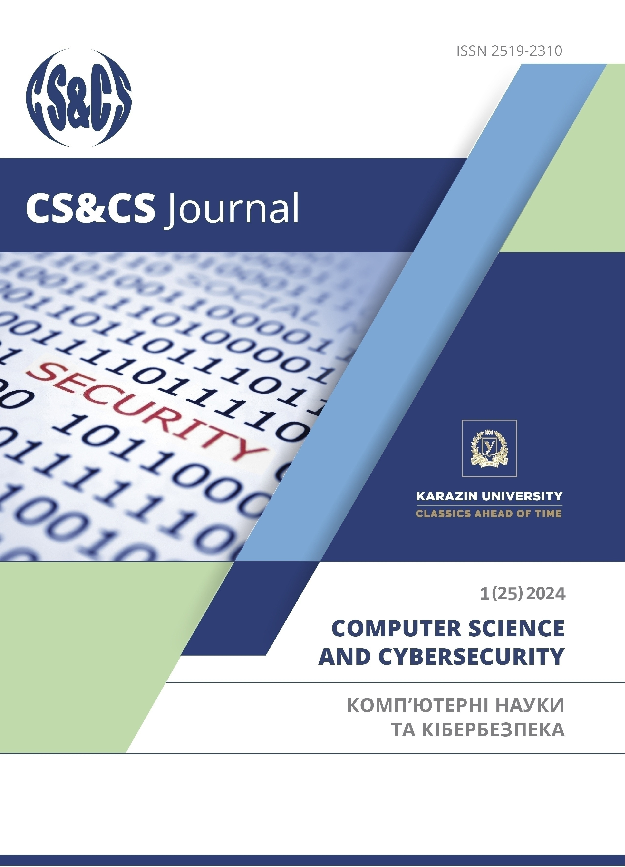Безпека в епоху бездротових інновацій: аналіз потенціальних загроз та заходи захисту
Анотація
У сучасному взаємопов’язаному світі технології бездротової передачі даних бездоганно інтегровані в структуру сучасних бізнес-операцій. Зі зростанням довіри до цих технологій зростає необхідність забезпечення надійних заходів кібербезпеки. Особливо в епоху бездротових інновацій, прикладом яких є поширення Інтернету речей (IoT), дискурс навколо безпеки бездротових технологій підкреслює необхідність розуміння як усталених загроз, так і постійної появи нових вразливостей. Це підкреслює нагальну необхідність своєчасного виявлення та стратегій пом’якшення. Хоча зручність, яку забезпечують бездротові технології передачі даних, надає суспільству безпрецедентний доступ до інформації та полегшує керування різноманітними пристроями, процесами та системами, вона також наражає користувачів і сучасні інформаційно-комунікаційні системи (ICS) на серйозні кіберзагрози та вразливості. Отже, виникає нагальна потреба у комплексному вирішенні цих викликів. У цьому дослідженні розглядаються сучасні методології, спрямовані на обмеження доступу до бездротових мереж, виявлення потенційних вразливостей і створення ефективної відповіді на кібератаки. Дана робота розглядає різні аспекти кібербезпеки, включаючи шифрування даних, механізми автентифікації користувачів, протоколи моніторингу трафіку та алгоритми виявлення аномалій. Крім того, робота звертає увагу на найважливіший аспект навчання персоналу методам безпеки бездротового зв’язку, оснащення його засобами поінформованості про загрози та реагування на інциденти. Враховуючи динамічний ландшафт технологій і загроз кібербезпеки, ця робота спрямована на встановлення базового розуміння ландшафту безпеки в бездротових мережах. Окреслюються прагматичні стратегії для ефективного управління ризиками безпеки, тим самим зміцнюючи стійкість сучасних організацій і захищаючи критичні інформаційні активи.
Завантаження
Посилання
Kolovanova, E., Melkoziorova, O., & Malakhov, S. (2023). The specifics of exploits and the particularities of countering this threat. Proceedings of the XXIX International Scientific and Practical Conference. July 25-27 2023, Warsaw, Poland. 216-224. https://doi.org/10.46299/ISG.2023.1.29 [in Ukrainian]
Shi, Q. (2019). Edge computing-enabled internet of things: A review, challenges and open issues. IEEE Internet of Things Journal, 6(5), 1615-1630. https://doi.org/10.1109/jiot2019.2892052
Elkhodr, M., (2019). A systematic review of industrial wireless sensor networks applications in oil and gas, agriculture and water treatment. IEEE Access, (7), 116623-116634. https://doi.org/10.1016/j.csi.2011.03.004
Onishchenko, Y., Chukalov, K., Geldt, S., & Kalancha, A. (2023). Methodology of evil websites and add-ons using SQL-injection and countering it. Proceedings of the XII International Scientific and Practical Conference. March 28-31, 2023. Florence, Italy. 409-414. https://doi.org/10.46299/ISG.2023.1.12 [in Ukrainian]
Kunz, M., Puchta, A., Groll, S., Fuchs, L., & Pernul, G. (2019). Attribute quality management for dynamic identity and access management. Journal of Information Security and Applications, (44), 64–79. https://doi.org/10.1016/j.jisa.2018.11.004
Earle, A. E., Frost, R. D. (2012). Wireless Security Handbook. (2nd ed.). New York: Auerbach Publications.
Muhammad Ehsan Rana, Mohamed Abdulla, Kuruvikulam Arun. (2007). Common Security Protocols for Wireless Networks: A Comparative Analysis. IEEE Communications Magazine, 45(4), 143-149. https://doi.org/10.2991/ahis.k.210913.080
Lee, I., Lee, K. (2015). The Internet of Things (IoT): Applications, investments, and challenges for enterprises. Business Horizons, 58(4), 431–440. https://doi.org/10.1016/j.bushor.2015.03.008
Pogorila, K., Bogdanova, E., & Kolovanova, E. (2022). An overview of the possibilities and specifics of the implementation of XDR technology, as a means of comprehensively counteracting current threats to information security. Technologies, tools and strategies for the implementation of scientific research materials of the IV International Scientific Conference. Zhovten 7, 2022. Vinnytsia: European Science Platform. https://doi.org/10.46299/ISG.2023.1.22 [in Ukrainian]
K. Ramesh Rao, Dr. S.N. Tirumala Rao, Prof. P. Chenna Reddy. (2017) Wireless Communication Security and Privacy issues and Challenges. International Journal of Computer Science and Information Security (IJCSIS), 15(7), 202-209. https://www.academia.edu/34148630/Wireless_Communication_Security_and_Privacy_issues_and_Challenges, ISBN 1947-5500
IEEE. (2020). Recommendations for Wireless Network Security. IEEE Standards Association. https://standards.ieee.org/ieee/802.11/7028/
Arjona, G., Garcia, M. P., Gil, J. A., Gómez, J. A. (2018). Enhancing Network Security Using Software-Defined Networking (SDN). Journal of Cybersecurity and Privacy, 1(1), 45-53. https://doi.org/10.3390/electronics12143077
Gorbenko, I., Gorbenko, Y., Yesina, M., & Ponomar, V. (2017). Propositions from the new level analysis and acceptance during the competition are decided to overcome new asymmetric post-quantum cryptographic primitives. Computer Science and Cybersecurity, (1), 53-70. ISBN: 2519-23-10 https://periodicals.karazin.ua/cscs/issue/view/577/827 [in Ukrainian]
Pogorila, K., Lesnaya, Y., Bogdanova, E., & Malakhov, S. (2022). Social engineering as a factor in the implementation of insider threats. Scientific Collection "InterConf", (111), 494-501. https://archive.interconf.center/files/journals/3/issues/11/public/11-12-PB.pdf#page=495.%20ISBN%20978-1-0747-2337-8 ISBN 978- 1-0747-2337-8 [in Ukrainian]
Lesnaya, Yu., & Malakhov, S. (2023). Understanding the main changes in the implementation of phishing attacks. Proceedings of the XVII International Scientific and Practical Conference, 453-457. https://doi.org/10.46299/ISG.2023.1.17 [in Ukrainian]
Авторське право (c) 2024 Комп’ютерні науки та кібербезпека

Цю роботу ліцензовано за Міжнародня ліцензія Creative Commons Attribution 4.0.


